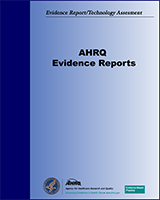From: 1, Introduction

NCBI Bookshelf. A service of the National Library of Medicine, National Institutes of Health.
| State | Total visits | Person-years | Rate (visits/person-year/1000) |
|---|---|---|---|
| Alabama | |||
| HPSA | 6,060 | 83,514 | 72.6 |
| Non-HPSA | 52,120 | 414,068 | 125.9 |
| Arizona | |||
| HPSA | 520 | 4,751 | 109.4 |
| Non-HPSA | 89,580 | 323,493 | 276.9 |
| North Dakota | |||
| HPSA | 1,240 | 13,205 | 93.9 |
| Non-HPSA | 9,840 | 76,672 | 128.3 |
| Oklahoma | |||
| HPSA | 5,380 | 48,086 | 111.9 |
| Non-HPSA | 52,180 | 335,968 | 155.3 |
| Oregon | |||
| HPSA | 280 | 2,672 | 104.8 |
| Non-HPSA | 41,280 | 240,533 | 171.6 |
| West Virgina | |||
| HPSA | 2,500 | 30,040 | 83.2 |
| Non-HPSA | 28,600 | 213,451 | 134.0 |
The Medicare Statistical System was used to estimate the gap in non-emergency specialty services between Health Professional Shortage Areas (HPSA) and non-HPSAs. Office consultation (CPT codes 99241-99245) and office outpatient visit (CPT codes 99201-99205 and 99211-99215) to a dermatologist from six states (Alabama, Arizona, North Dakota, Oklahoma, Oregon, and West Virgina) were collected from the 1998 Standard Analytic 5% Sample Part-B Physician file. Claims from beneficiaries entitled to Medicare because of disability or only end stage renal disease (ESRD) were excluded. Claims are stratified into two groups defined by whether the beneficiary resided in a primary care HPSA county. Each claim is weighted by a factor of 20 to estimate the number of claims for the entire state. Since Part-B eligibility and HMO enrollment status fluctuate from month to month, the denominator, person-years, is calculated as the difference between the number of months of Part-B coverage and the number of months of HMO coverage. (CPT codes, descriptions, and materials only are copyright, 1998, American Medical Association. All rights reserved.)
From: 1, Introduction

NCBI Bookshelf. A service of the National Library of Medicine, National Institutes of Health.